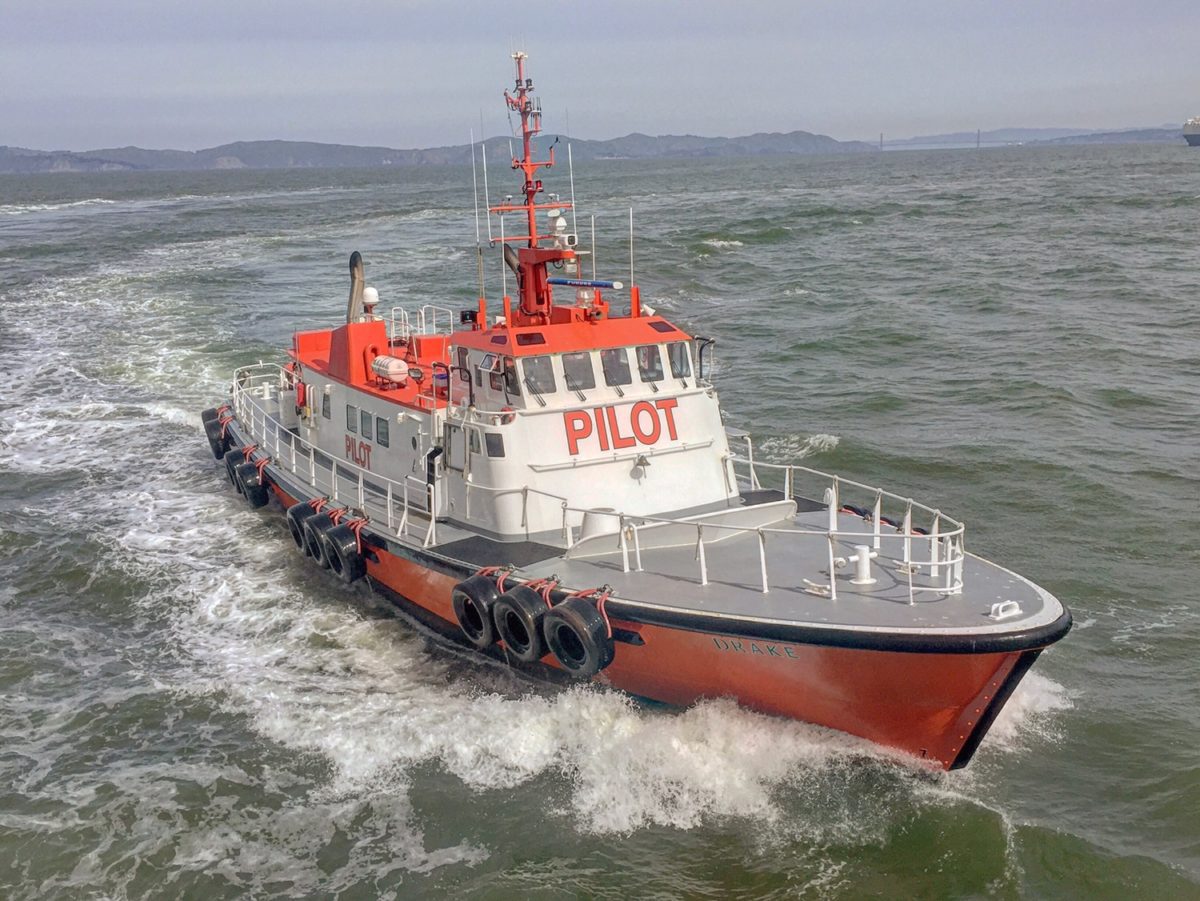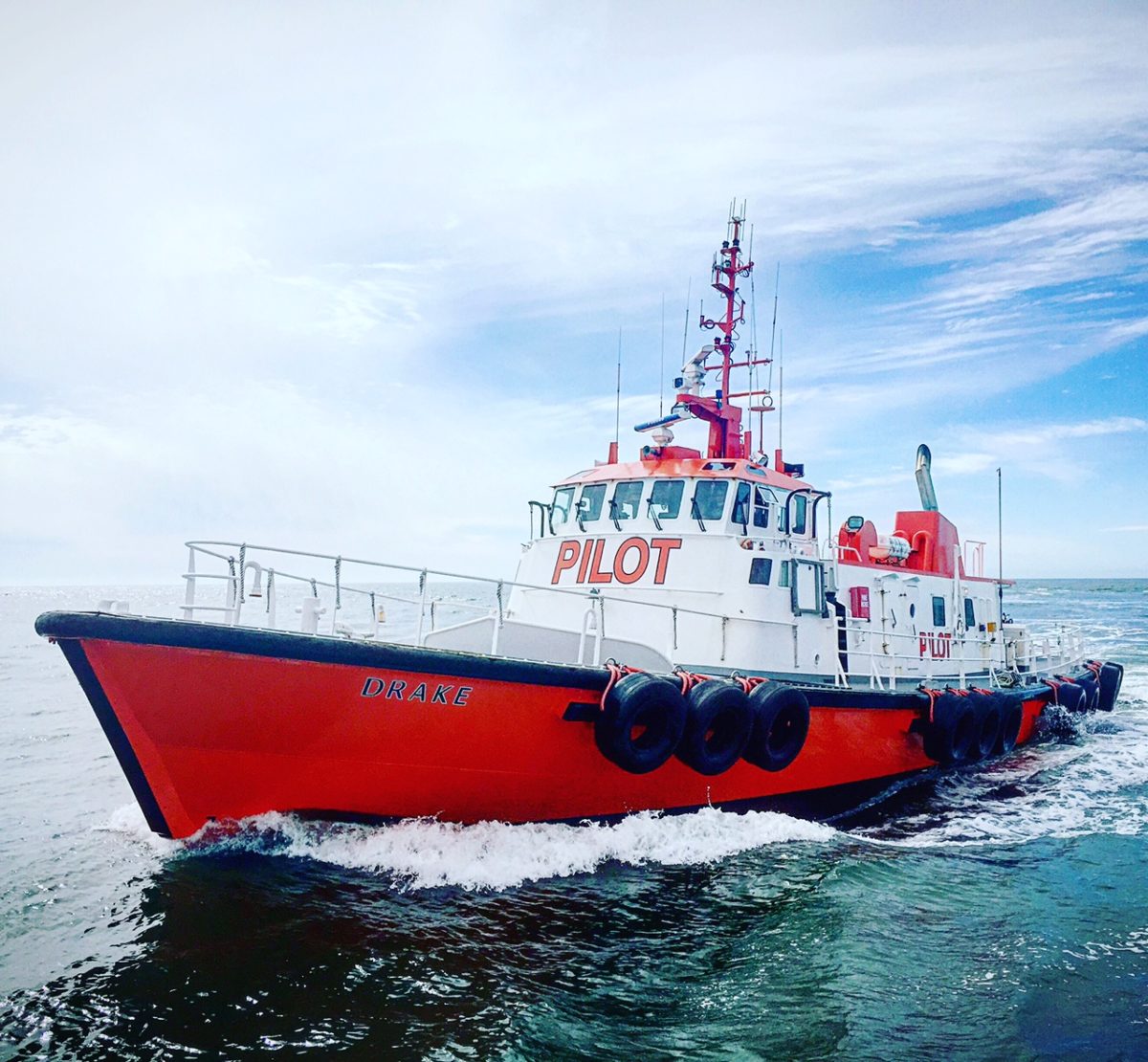Shedding Light on “Hot Work” Safety Gaps Offshore
On a relatively mild November morning, a fire broke out on an oil platform about 12 miles off the Louisiana coast, sending a column of black smoke into the sky....

Photo by Capt. Ron Greger
By Captain Allen Garfinkle
Back in the day, there was much that was mysterious to me about the pilots who joined my ship as we sailed in and out of port. They arrived on board just prior to leaving the dock and left once the ship had safely cleared port. It seemed to me that the pilots had the opportunity to enjoy the most interesting portions of a trip. I observed firsthand (and with no small amount of envy) that the pilots had the universal respect of the masters and crew members. Here are five facts that I didn’t know back then about pilots, and more specifically, the San Francisco Bar Pilots.
The first fact is that a pilot’s job is dangerous. It was not that long ago that four maritime pilots (and one pilot boat operator) died in pilotage waters across the United States in one 13-month period. The critical and most dangerous part of the job for a pilot is when he or she transfers between the pilot boat and the ship. Not only is timing and judgment key to a successful transfer, but a certain amount of athleticism is required. A recent example of the dangers faced every day by pilots happened during a transfer from the pilot boat to ship. The pilot was climbing his way up to the deck when a step on the Jacob’s ladder gave way after the pilot put his full weight on it. The pilot literally had to muscle his way up to the next step – he survived.
The second fact is that the pilots don’t work for the ship masters or the ship owners. Sure, they get their fee from the ship owners, but under the system of compulsory pilotage, pilots work for the people of the jurisdiction they represent. In the case of the San Francisco Bar Pilots, they work for the people of California. Compulsory pilotage was established in California as one of the first acts of the California State Legislature in 1850, and the pilots are the state’s representative aboard ships (750 gross tons and over) traveling to, from and about the San Francisco and Monterey Bays, and tributaries to Stockton and Sacramento. In a practical sense, compulsory pilotage insures that the pilot puts safety of the ship and environment above other interests, and that pilots are not influenced by the same commercial business pressures felt by the master or owner of the ship. This is one of the reasons a pilot is not considered a member of the “Bridge Team,” but is expected to work with the bridge team toward a common goal of a safe passage. Pilots regularly study bridge resource management to continue honing their skills to effectively and successfully interact with the bridge team crew members.
The third fact I didn’t know is that pilots, including the San Francisco Bar Pilots, come from a variety of maritime backgrounds. Having shared stories with many a pilot over the years, I have come to learn that they are not all old salts that climbed “up through the hawse.” Pilots come from varied backgrounds that reflect the diversity of the maritime industry. If one were to tally up the numbers, there actually may be more tug boat captains, sometimes known as brown water skippers, working as pilots than there are blue water, deep sea captains. While some pilots may have started as deck hands, many are maritime academy graduates – both having worked their way up through the ranks to hold U.S. Coast Guard master’s licenses.

The fourth thing I didn’t know about the San Francisco Bar pilots is that they participate in ongoing training to remain experts in the craft of shiphandling. To maintain their state-issued license, the San Francisco Bar Pilots are subject to mandatory continuing education requirements. Every five years, each pilot attends training that includes a five-day manned scaled model shiphandling course where various maneuvers are learned and practiced, and they also attend a five-day bridge resource management course. Each of these courses is designed to expose a pilot to challenges they hope they never have to meet in real life (but if they do, they will be better prepared by the training). Currently, the San Francisco Bar Pilots train on manned scaled models at Artelia’s state-of-the-art Port Revel facility in France. There they train on eleven 1/25th scale models assisted by five radio-controlled tractor tugs. The bridge resource management course is currently offered at California State University Maritime Academy. In addition to this training, the San Francisco Bar Pilots regularly use computer technology as a navigational aid when piloting, and particularly in reduced visibility conditions, which is quite often the case in the Bay Area. Recently, through an agreement between the pilots and industry groups, the California Legislature authorized a $1.2 million surcharge to pay for new navigation technology that will be used to provide portable piloting units for each pilot along with the latest independent GPS and rate-of-turn indicators, and will also provide precision docking systems to be utilized while handling ultra-large container vessels.
The fifth fact I did not know is that the fee that a San Francisco Bar pilot charges for his services is set by the California Legislature. Because pilotage is compulsory in San Francisco, and the pilots have a monopoly on providing the services, the Legislature sets the rates a pilot can charge (the charge for crossing the sand bar just outside of the Golden Gate Bridge is calculated on both the gross tonnage of the ship and the draft). If either the ship owners or the pilots want to change the pilotage rates, the Board of Pilot Commissioners for the Bays of San Francisco, San Pablo, and Suisun holds public hearings on the matter. Based on the information gathered in those hearings, the Commission makes a pilotage fee rate recommendation to the Legislature. That recommendation is considered along with other evidence when either the pilots or a ship owner finds a legislator willing to sponsor a bill containing changes to the pilotage rates. The San Francisco Bar Pilots, who are all licensed by the Pilot Commission, operate as an association that pools both the income from providing pilotage services and the cost of providing those services. At the end of the year, the pilots divide up the net profit evenly amongst the members of the association. In recent years that profit has been adequate enough to “attract” new pilots and “hold” onto the ones that are working.
The Board of Pilot Commissioners for the Bays of San Francisco, San Pablo, and Suisun, is the state licensing and regulatory entity for pilots on the bays of San Francisco, Monterey, and tributaries to Stockton and Sacramento. The Board of Pilot Commissioners is hosting an entrance examination in June of 2017 for those mariners wishing to enter the Commission’s pilot trainee training program. Training program graduates are licensed by the Commission, and eventually become a San Francisco Bar Pilot. Interested applicants can get more details on the training program entrance examination on Board of Pilot Commissioners’ web site at: http://www.bopc.ca.gov/application/.
Captain Garfinkle sailed for thirty years as a deck officer. He is a graduate of California Maritime Academy and the University of San Francisco’s School of Law. He currently is the Executive Director for the Board of Pilot Commissioners for the Bays of San Francisco, San Pablo, and Suisun.

Sign up for gCaptain’s newsletter and never miss an update

Subscribe to gCaptain Daily and stay informed with the latest global maritime and offshore news
Essential news coupled with the finest maritime content sourced from across the globe.
Sign Up